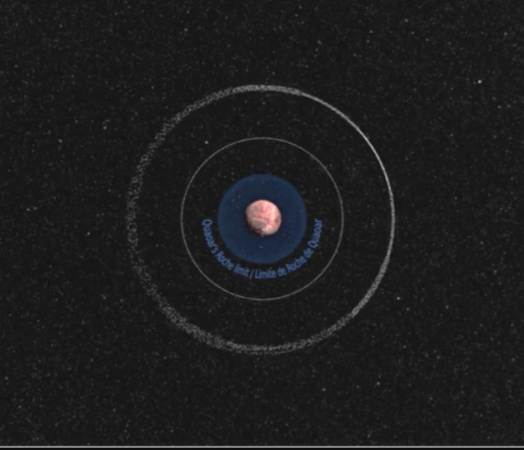
USA: The discovery of a ring around the distant dwarf planet Quaoar, which is beyond Neptune, earlier this year astounded scientists. According to researchers, the planet's ring, which is similar to Saturn's, is located at a distance that defies laws of physics. It now appears that the mini planet has not one, but two of these 'impossible' rings.
The Roche limit, or the distance within which the gravitational field of a celestial body is sufficiently strong to prevent any smaller body from being held together by gravity, is beyond the newly discovered ring around Quaoar.
Within this limit, orbiting material will probably scatter and form rings. A moon would typically form if the material were to expand past the Roche limit.
Also Read: Leading economic risks are listed by the Russian Central Bank
According to estimates, the Roche limit for the dwarf planet Quaoar is somewhere around 1,170 kilometres. The newly found ring on Quaoar is about 2,400 kilometres from the planet's centre, which indicates that it should have collapsed to form a moon, but it hasn't. At nearly 4,100 kilometres from Quaoar's centre, the other "impossible" ring is farther away.
Telescopes failed to pick up any rings on Quaoar. Rather, a rather deceptive approach was used by scientists to find them. It was possible to make observations because Quaoar blocked the starlight as it passed behind some far-off stars. Between 2018 and 2021, Quaoar eclipsed four far-off stars, which are referred to as stellar occultations, and astronomers on Earth were able to observe them.
The first ring was identified by the first ring's presence as the starlight began to fade. The second ring was found in August 2022 as a result of another stellation occultation, which also revealed more details about the first ring.
Also Read: US pressured Ukraine to reveal the number of its troops
An occultation is anticipated to take place on May 13, which is exciting. A telescope in the US or Canada will be able to see it.
According to Chrystian Luciano Pereira of Brazil's National Observatory, "this event involves a bright star and will be useful to constrain the Quaoar shape better, in addition to being a good opportunity to obtain more details about these two remarkable rings."